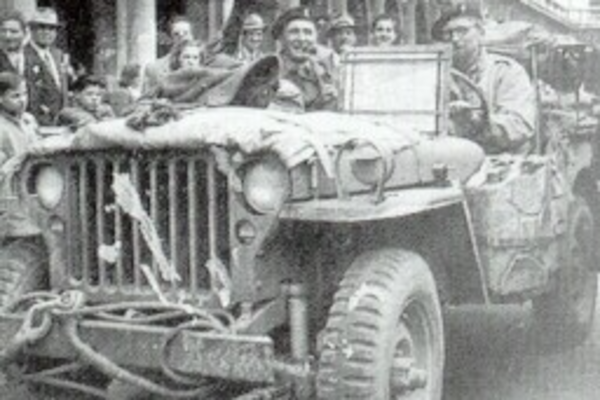VE day in Venice - Guy Harris
Twenty years ago, I stood in St Mark’s Sq, Venice, with a small band of British WW2 veterans. They had last been in the Piazza in 1945, and their final flourish, after fighting Fascism in North Africa and Europe, was to land their Jeeps from lighters drawn up on the Grand Canal, and to drive them jubilantly around the famous square. They were remarkably silent in 2005, lost, I imagined, in their recollections. The black and white photos of that far off day depict amused Italian civilians watching the British soldiers, and children running excitedly behind the Jeeps.
Eighty years later, the veterans I knew have passed away, and today many of us struggle to imagine what the end of total war must have felt like: Relief whilst mourning loss; the slow draining away of mortal fear; the bracing of oneself to the immense works ahead…
And yet today, the spectre of ultra-nationalism, genocide and dictatorship is at large again… And this VE Day there is much to reflect deeply upon.
After WW2, Britain led the effort to build an international rules-based order to protect the hard-won peace that our Grandparents and Great Grandparents had literally fought and died for; that our country had been bombed into rubble for; that our coffers had been emptied for... Additional to these legal frameworks for justice, peace and human rights, Britain built the architecture of public health on the blueprint of the Beveridge Report, commissioned by the wartime coalition government. And we built homes fit for a nation of heroes so that ordinary families could live in dignity. We had won the war, and we endeavoured to win the peace.
We shouldn’t let sentimentality or toxified nostalgia detract from the challenges and privations of the 1940s and 50s, but we should be clear what those sacrifices were made for: The laws, rights and values installed after WW2 are the memorials to British and Commonwealth dead, and they are the memorial to the millions exterminated in the Holocaust. They are the armour that protect us and our children from over-mighty government and from dictators far and near... Those protections are memorials not to our basest human instincts but to our highest human instincts. In times of inequality, poverty and uncertainty, those higher instincts are sometimes hard to muster. But the history of WW2 shows that they can be mustered, even in the face of fear and insecurity, and despite the siren voices of demented dictators and their cynical, self-interested disciples, who pose as patriots but are anything but... Today, those who would demolish democracy and tear down our protections clearly do not understand what Britain’s existential fight between 1939-45 was for. Nor do they really value it, other than as a cynical propaganda tool. When we recall the victory against Nazism on May 8th, we should remember that the names graven on the war memorials standing in our villages and towns mark individual human sacrifice in the fight against intolerance, hatred, racism and authoritarianism. Those sacrifices embody true British values, fought for by decent British men and women. As liberal democracy is tested at home and abroad,
this May the 8th, let’s remember what our forebears were fighting for and, in particular, what they were fighting against… And let’s rise to their example in the coming years.
by Guy Harris
